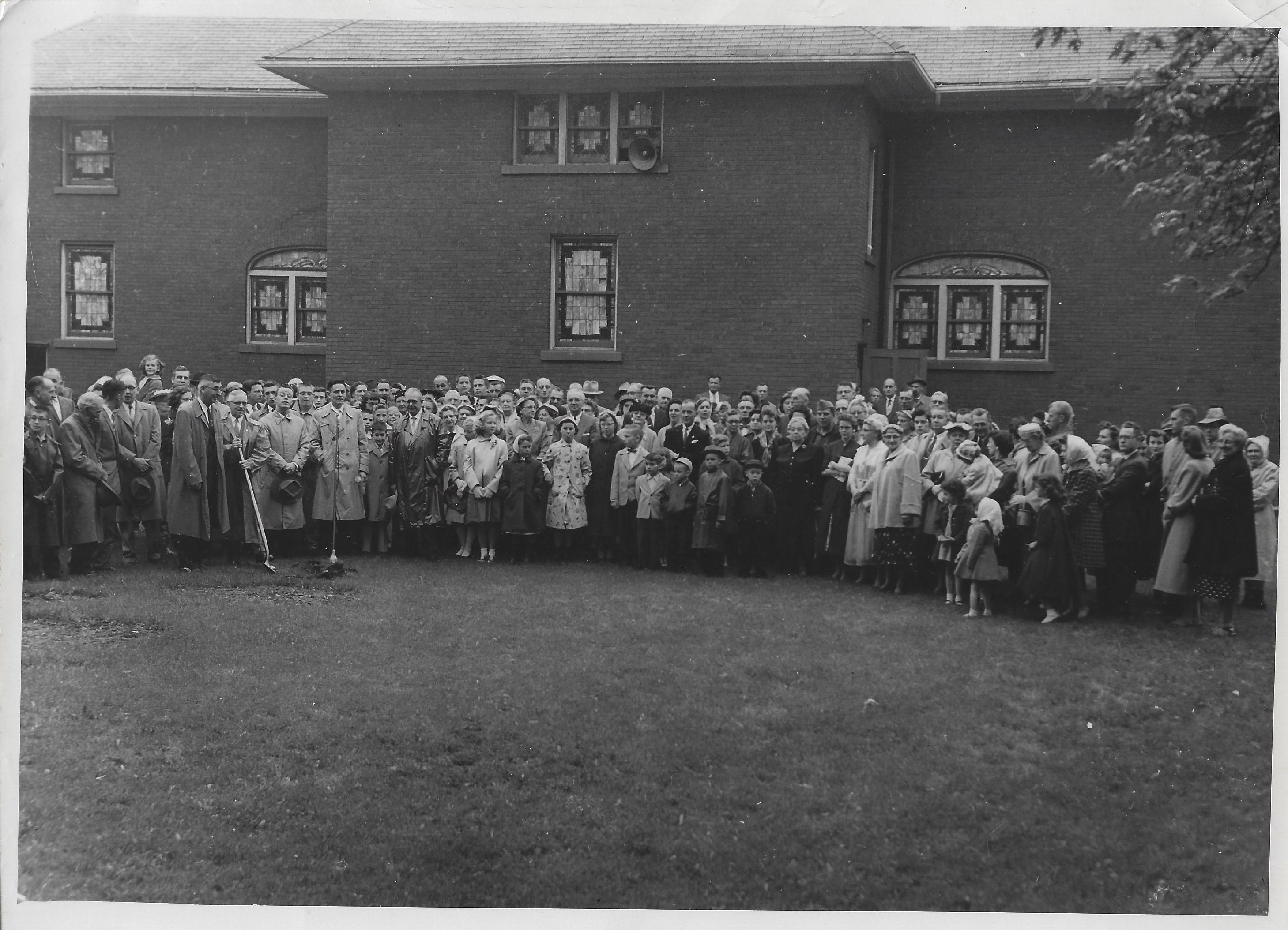
13 minute read
Adulthood
Breaking ground on Oak St, 1957
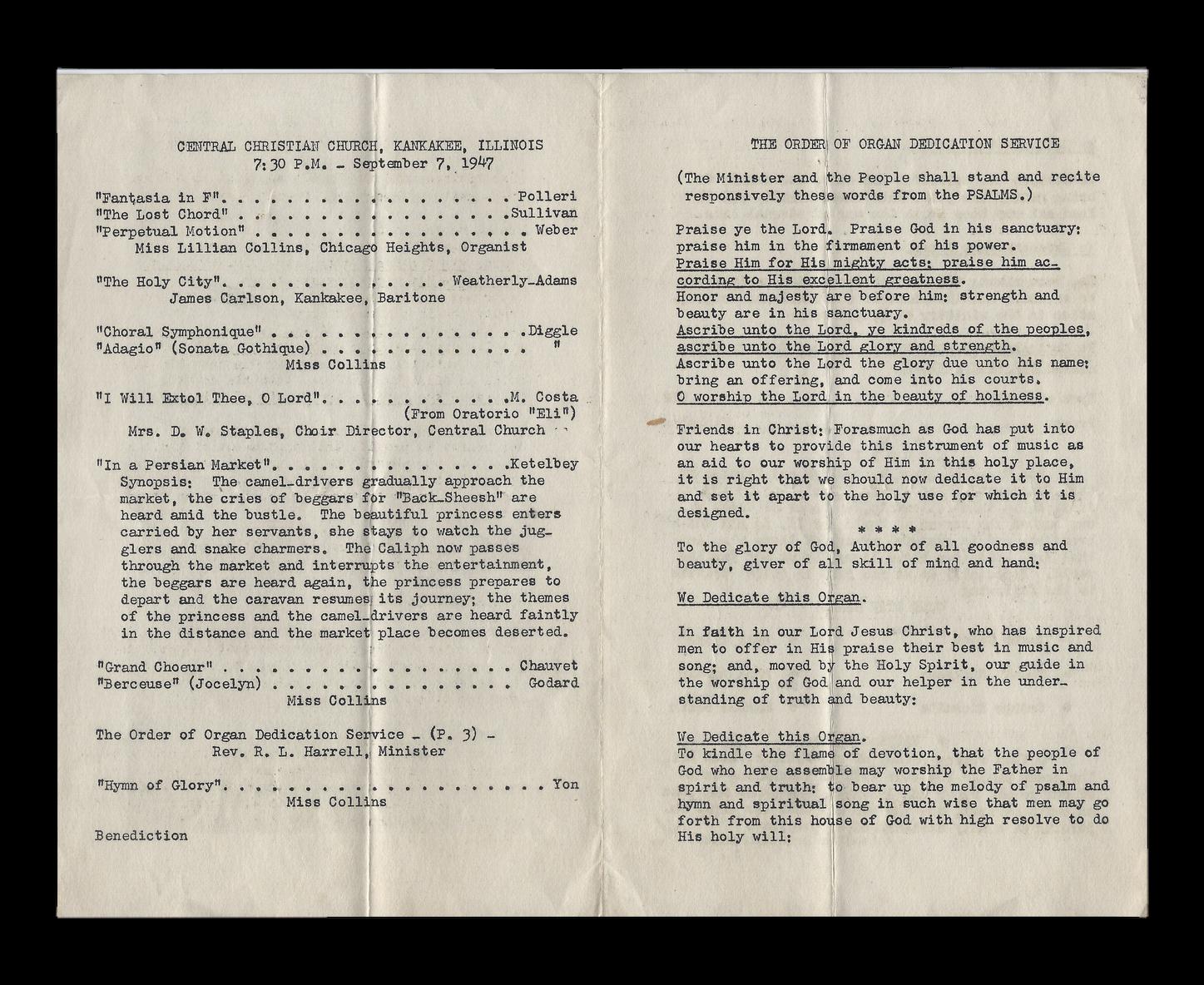
Advertisement
Right: Cover of 50th Anniversary Celebration (October 10, 1943) Right: WeNeedU Class Meeting mInutes book and Constitution) (1930-1941) Above: part of a bulletin from the organ dedication on September 7, 1947
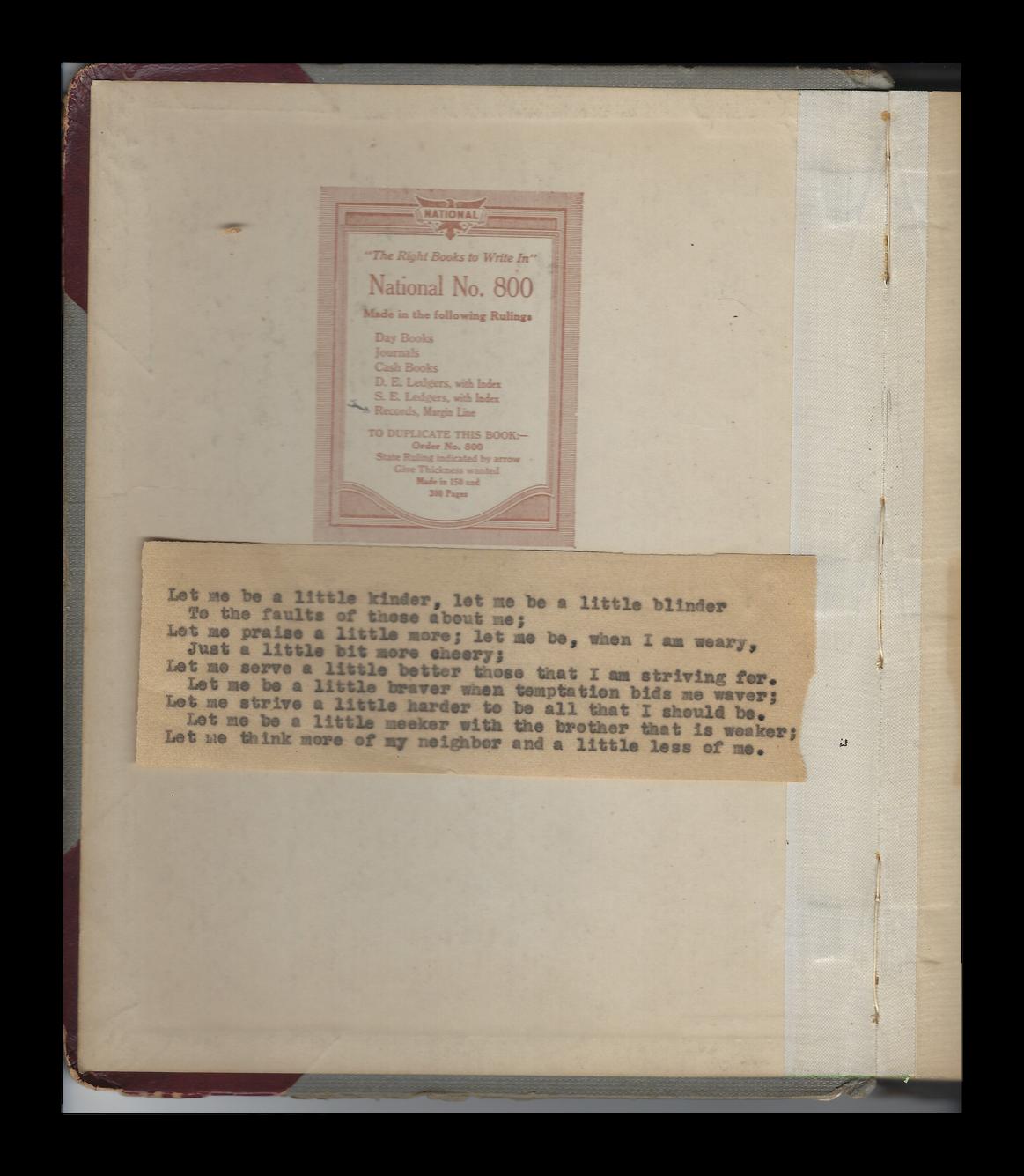
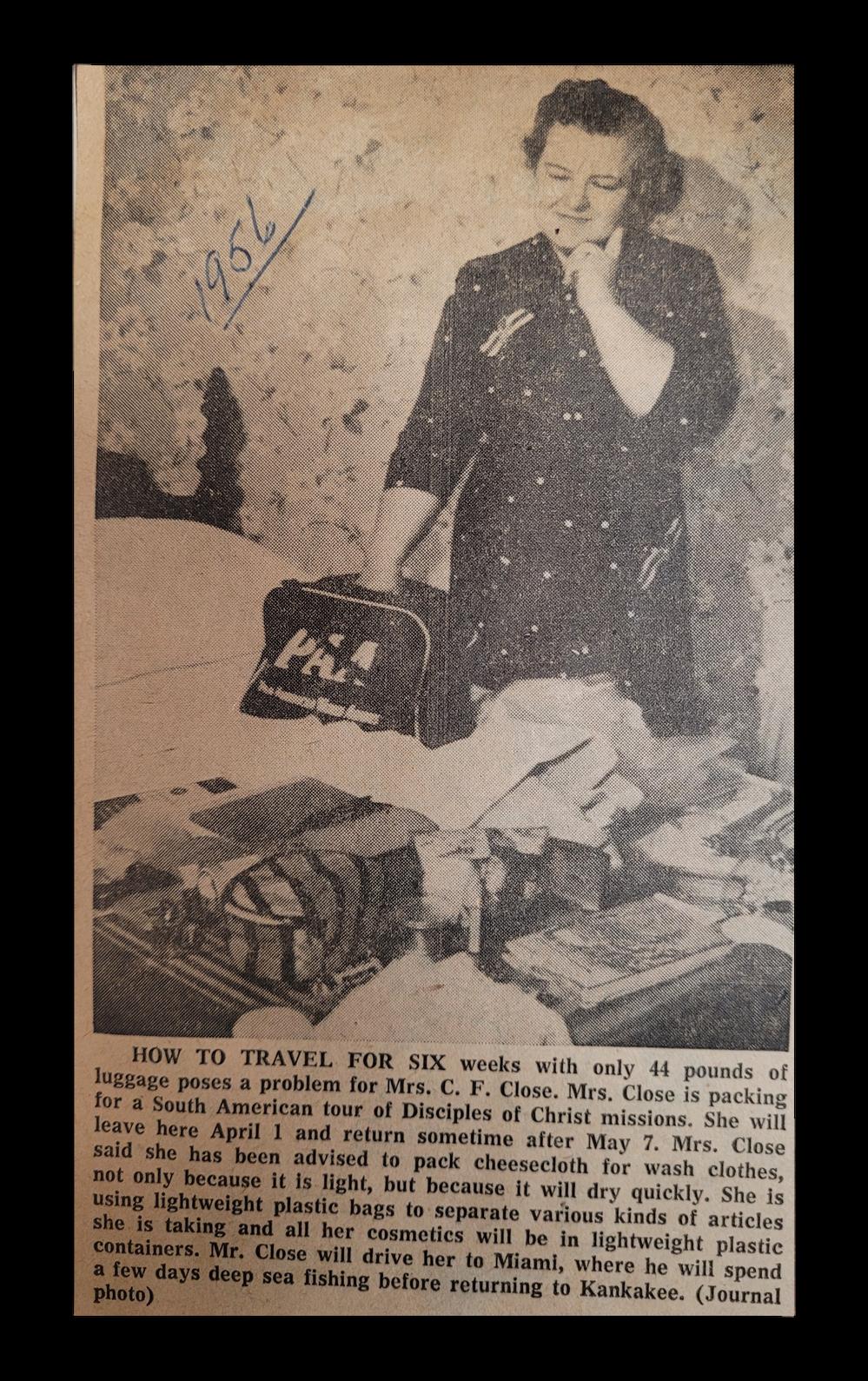
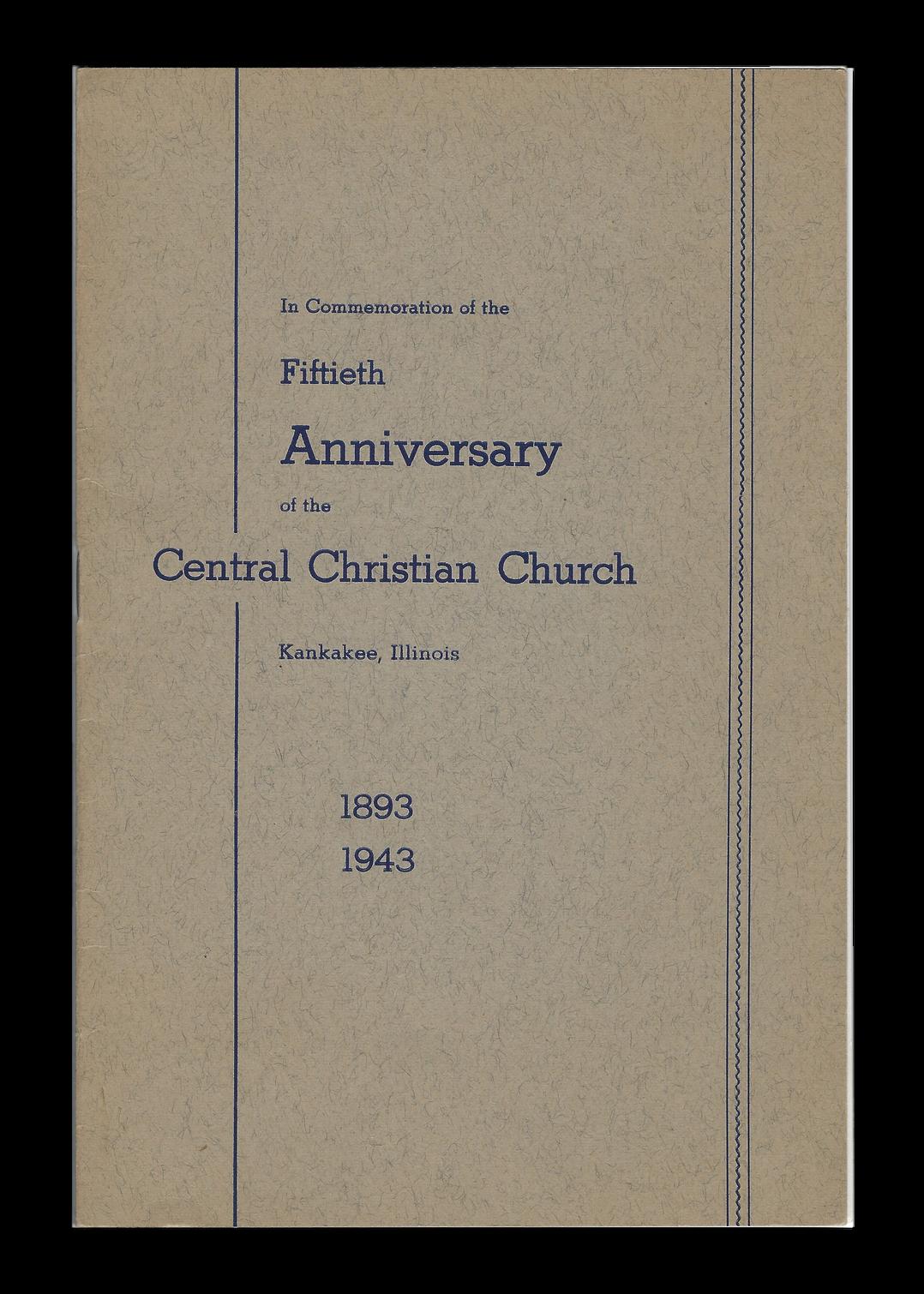
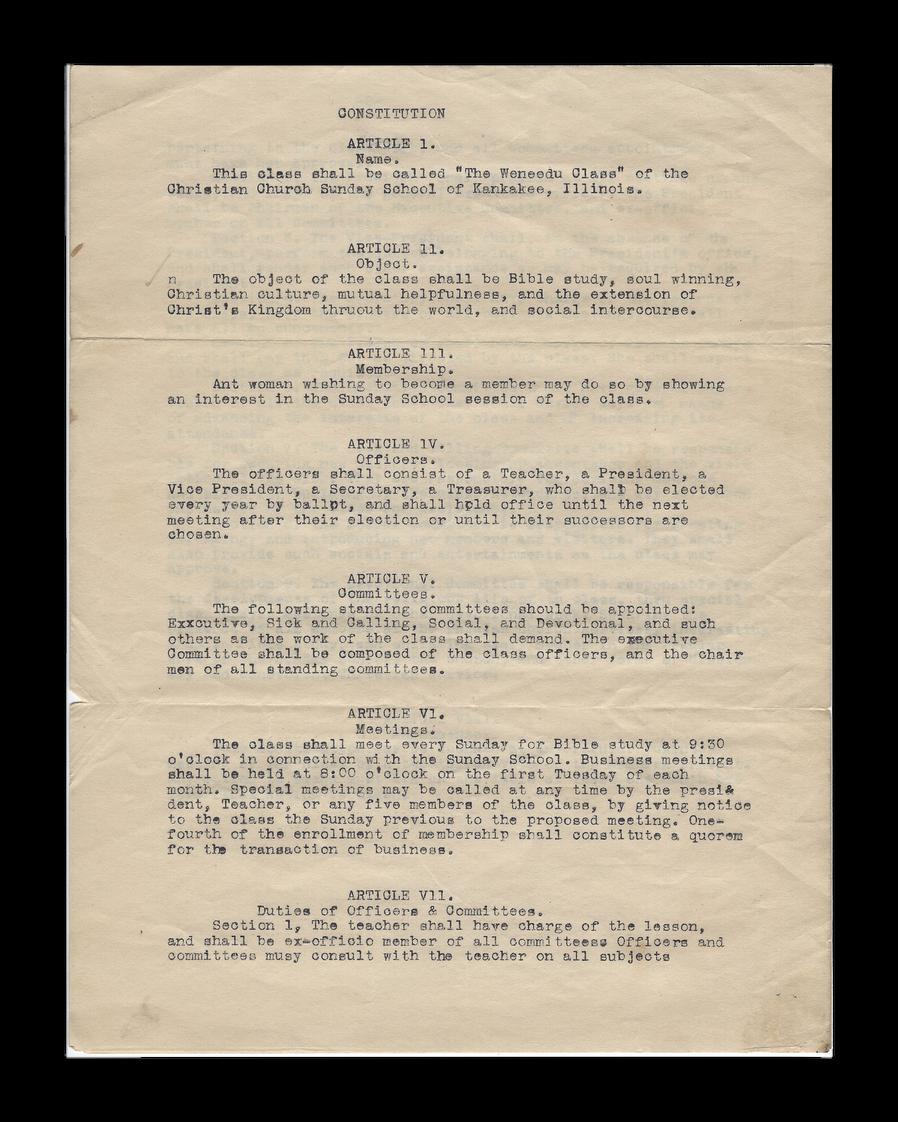
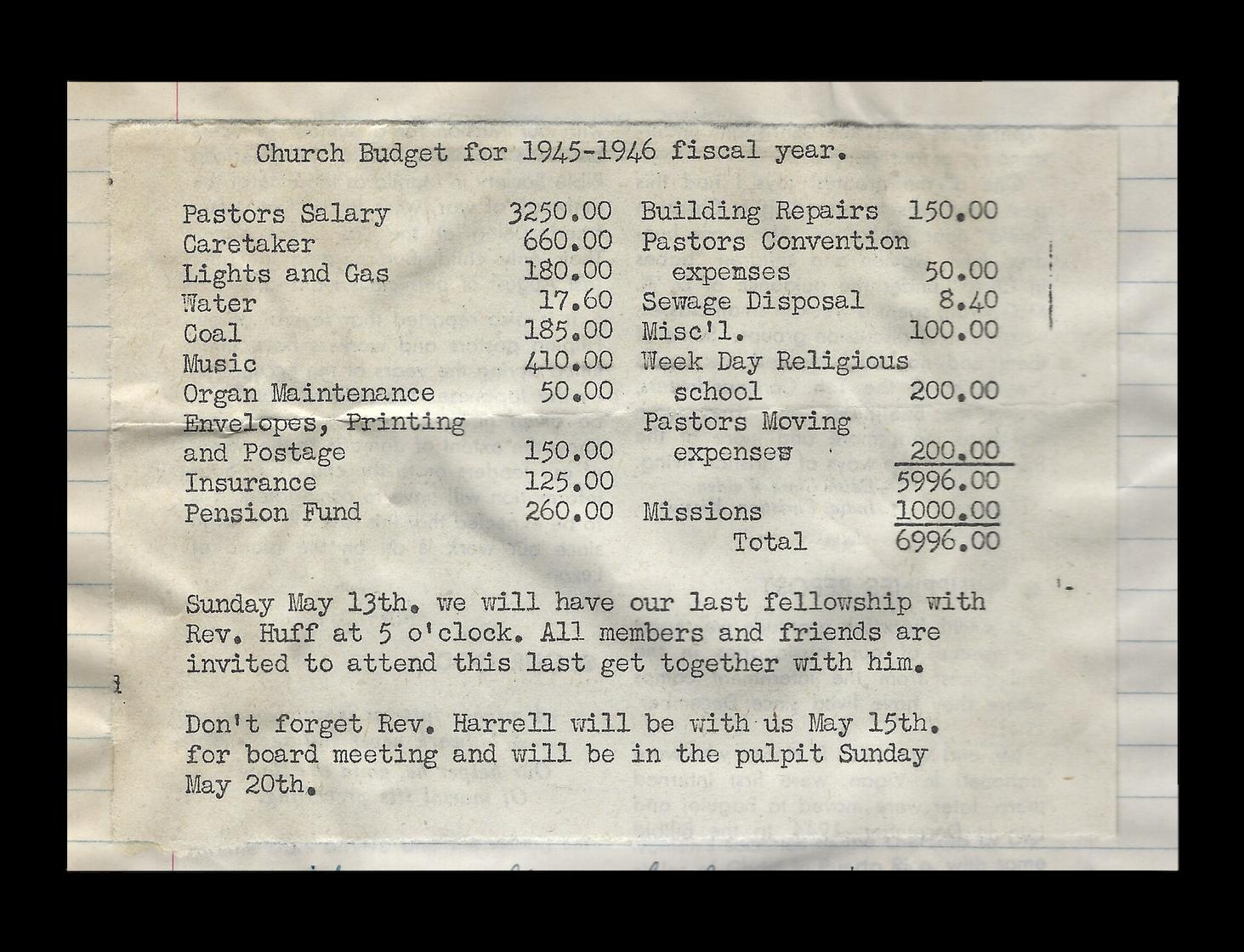
Above: Cover of 45th Anniversary Celebration, September 25, 1938
Right: Newspaper article featuring Lorraine Close when she went on a six week South American tour of Disciples of Christ Missions in 1956. Above: part of a bulletin with the budget for 1945-1946
O N T H E M O V E
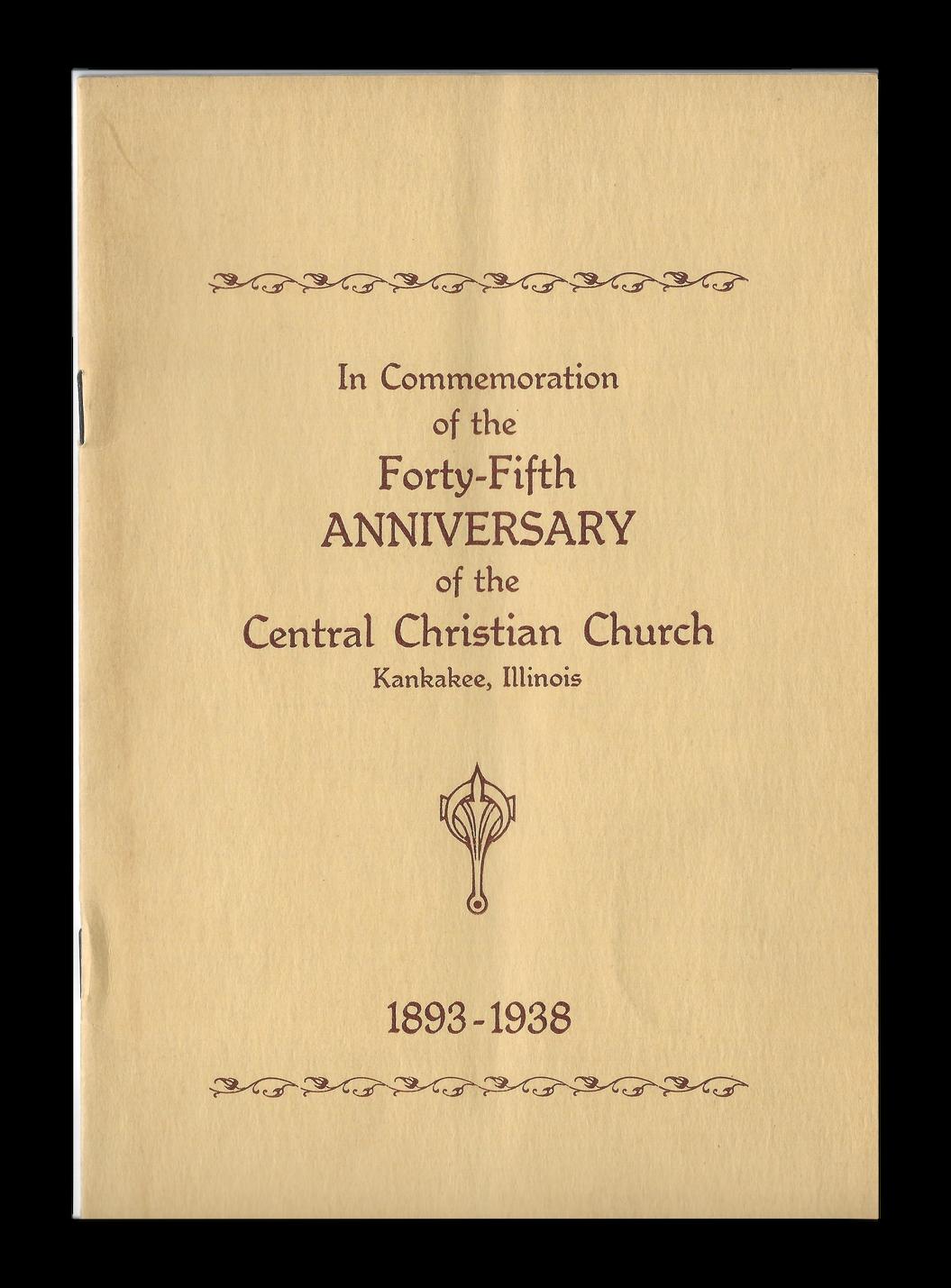

Rev. W. Harold Edds
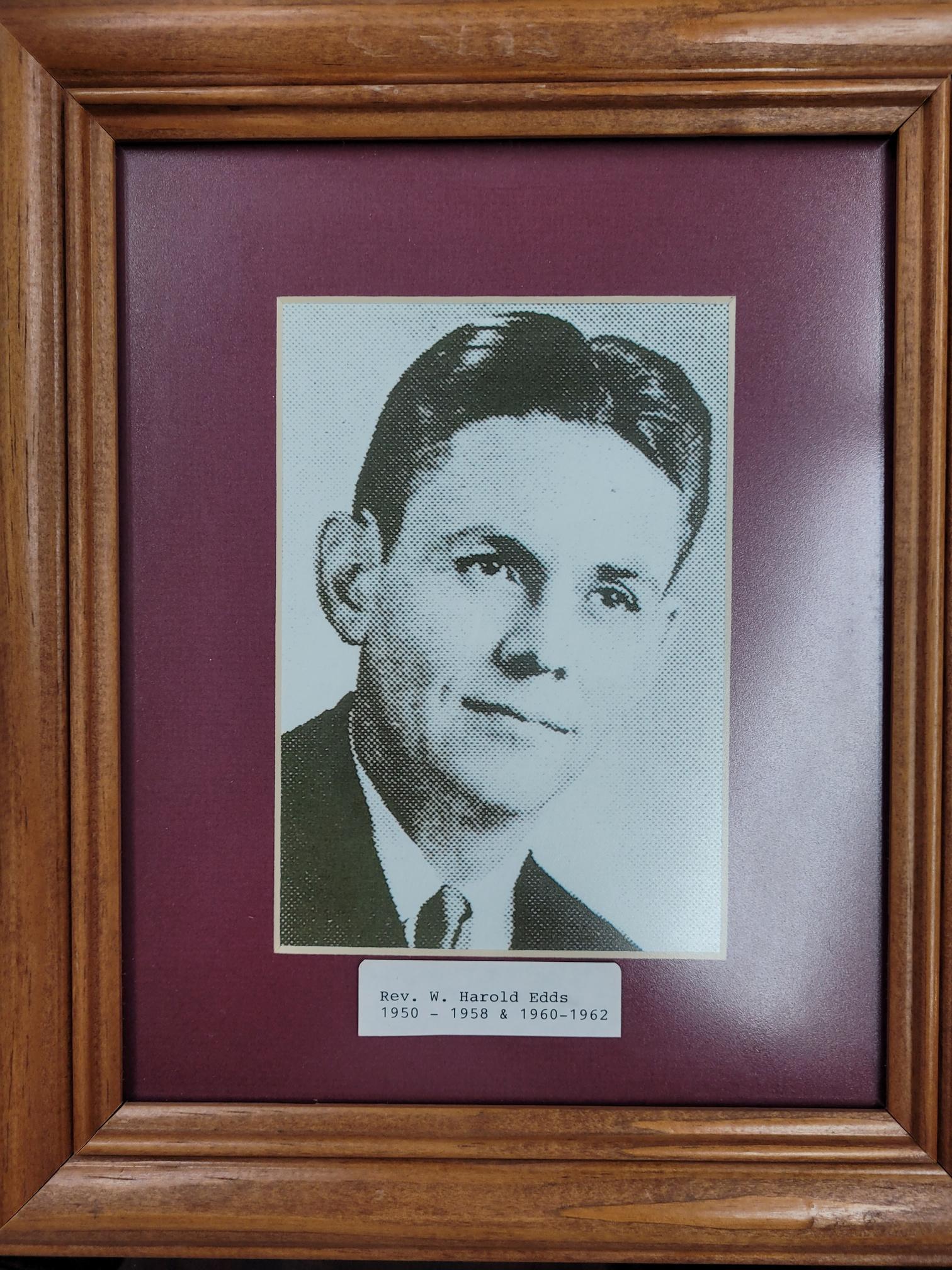
By this time, Central Christian Church in Kankakee had called the one who would become their beloved pastor, Rev. Harold Edds, a young man of thirty-one. During his interview process, the congregation was “ pleased with his appearance & his message ” (xxxiv) and due to the number of young people in the congregation, believed hiring a young minister could be a good move (xxxv).
After an increase in attendance necessitating an additional service (xxxvi), one of the hallmarks of his pastorate was a building project, begun in 1956, and when the new sanctuary was completed, Rev. Edds, who had left in order to take a position in February of 1958 as business manager of the International Convention of Disciples of Christ (xxxvii) returned for the first worship service in the sanctuary. During the June 1, 1958 service of dedication, a “beautiful service, ” Rev. Edds “ preached the first sermon in the new church…he preached on the cross ” (xxxviii) in a sermon entitled “This Above All!” (xxxix). The walnut cross he and his wife Ann purchased for the sanctuary above the baptistry (xl) measured fourteen feet tall and seven feet wide. It was not the first building project and it would not be the last. Central Christian Church began as and would continue to be a church on the move, building a future that would endure.
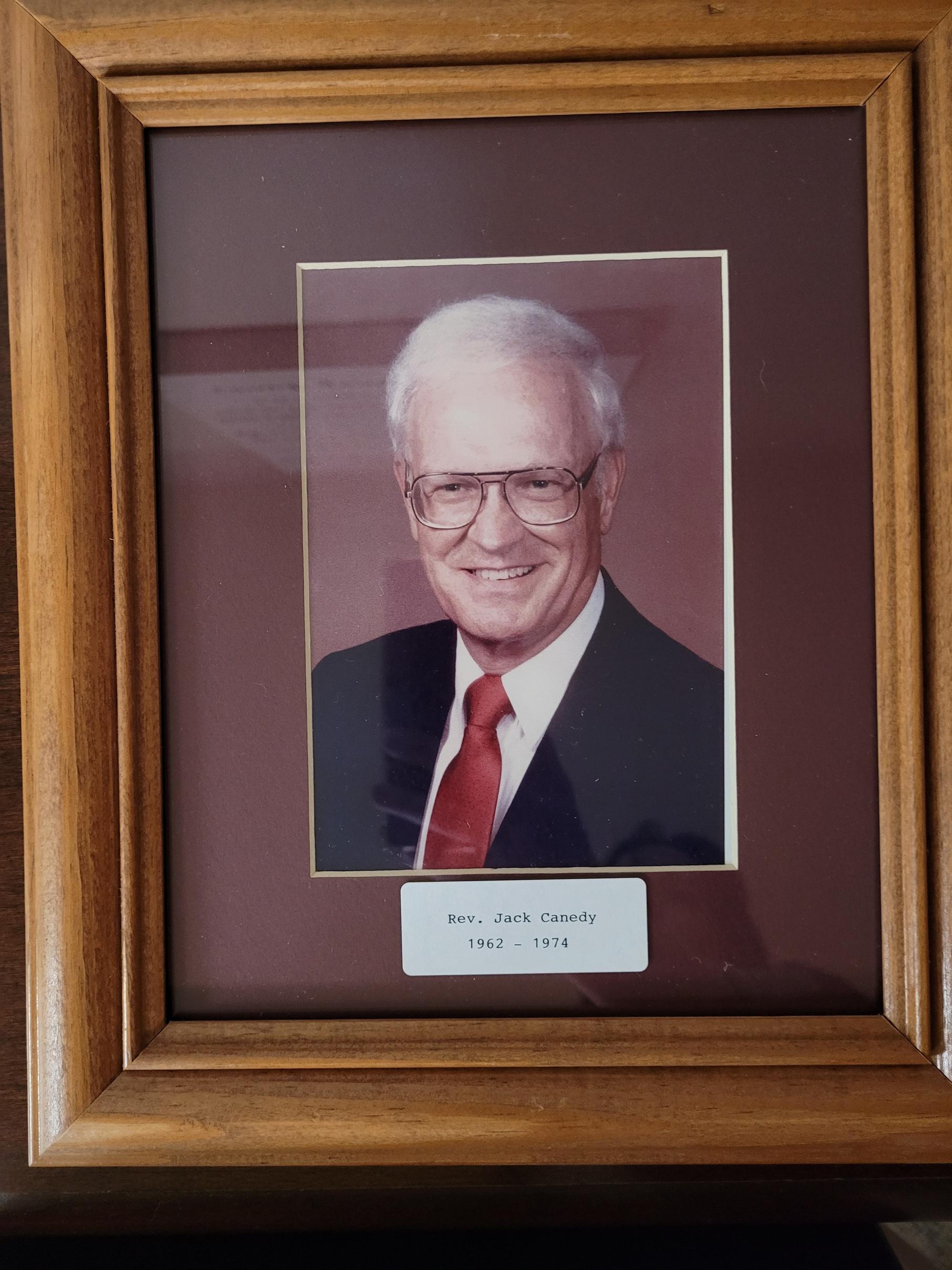
The 1960s, a tumultuous time for everyone nationwide, brought both strife and unity to Central Christian Church. Pastor John R “Jack” Canedy arrived and would lead the congregation through Restructure as the Christian Church (Disciples of Christ) was officially established.
The church began preparing for this. In October of 1966, Rev. Jack Canedy presented to the Board about his and other representatives —
“Mrs. Close, Mr. and Mrs. Leo Phillips, my wife and myself”(xli) —presence at the International Convention in Dallas two weeks prior. In their opinion, it was “ one of the finest we have had in recent years ” and “The business session handled some of the most historical steps we have taken as a brotherhood for many, many years ” (xlii).
Rev. John "Jack" Canady
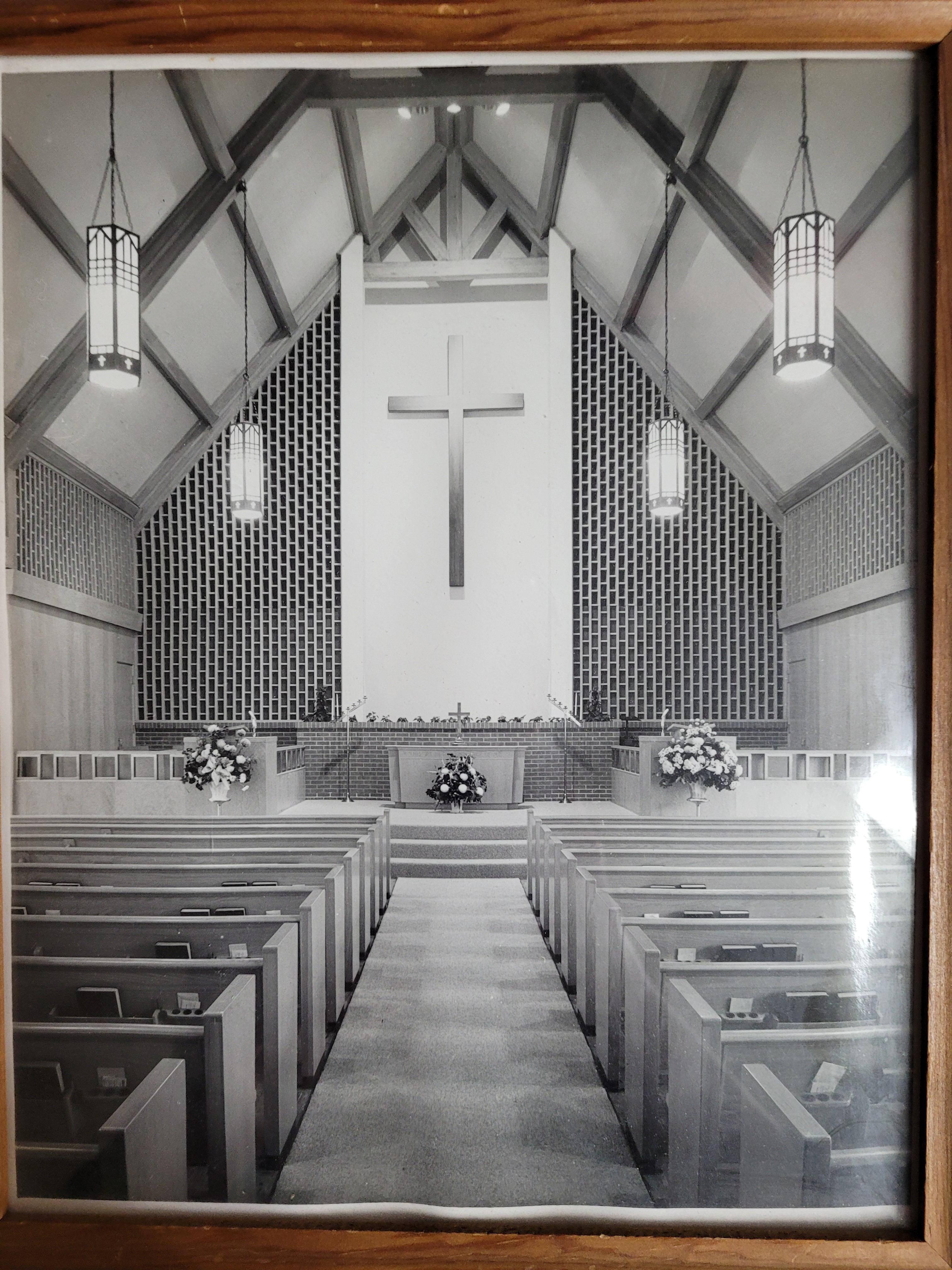
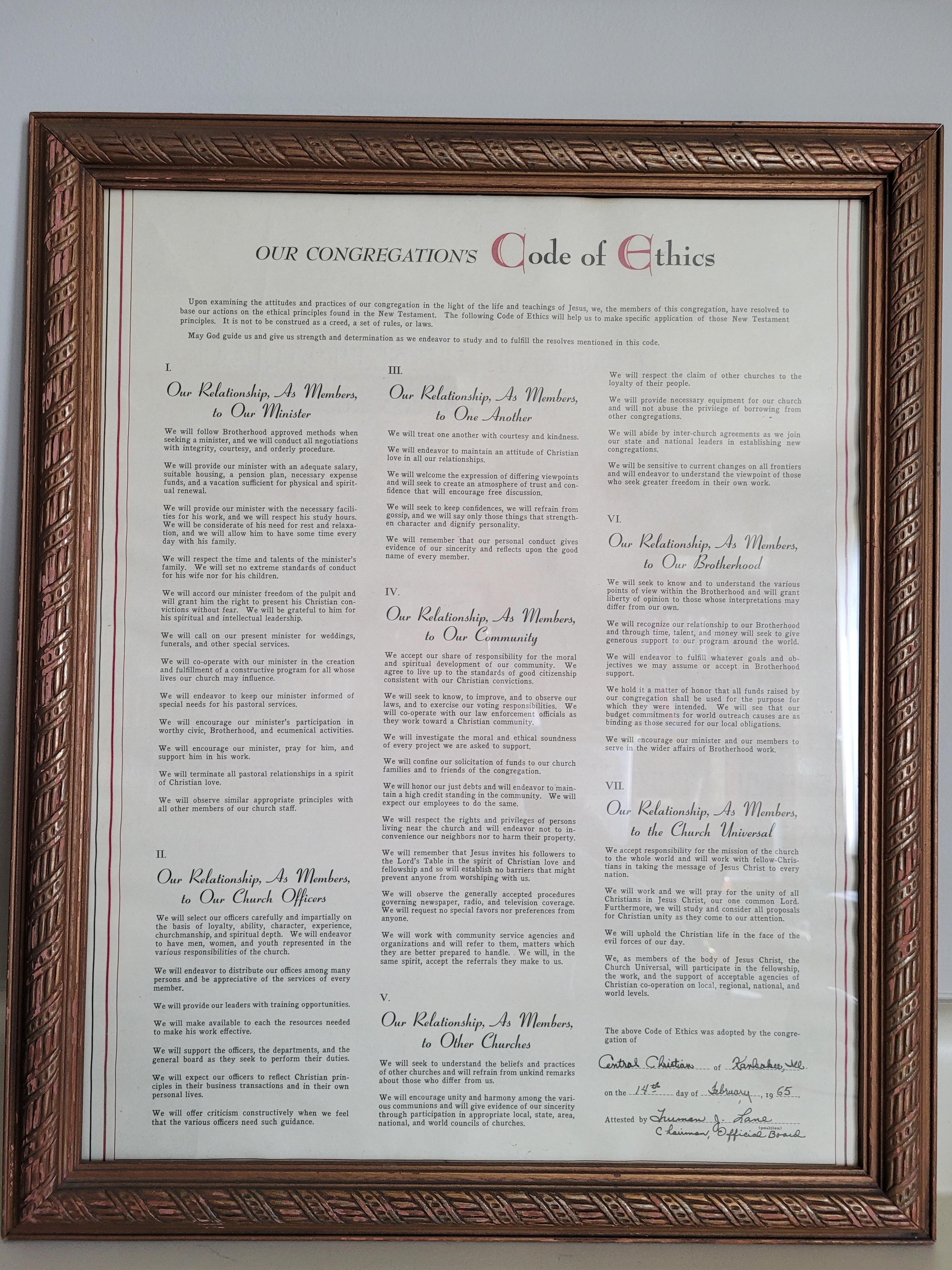
This was followed by sharing about an amendment to the bylaws which would enable Central “three voting representatives at the Convention to be held in St. Louis next fall” (xliii). In addition to this news, Rev Canedy advised them of “A second signification action…the acceptance of the ‘Proposed Design for the With the resignation of their Religious Education Director, Rev. Dixie Webb, Central had to decide how to proceed with filling her position. The Christian Education Department recommended “the immediate appointment of a Personnel Committee to seek out a staff member… employing the best possible person for our needs
Christian Church as presented by the Restructure Commission for submission to the churches for study and reaction ” (xliv).
at Central, whether they be fresh out of seminary or presently employed by another church. The Department is of the opinion that we must have either a Minister of
The Membership Department planned a study on Restructure for the parish meetings in the coming year (xlv). In February, Madeline Phillips reported “The parish groups will be glad to help with plans to inform [the] congregation of Restructure ” (xlvi).
Shortly thereafter, Rev. Canedy also showed a movie titled, “Brotherhood Restructure ” (xlvii). In October of 1967, Mrs. McCracken, Mrs. Close, and Mr. Canedy were sent as delegates to the International Convention in St. Louis (xlviii). Rev. Canedy ’ s wife, Mary Lou, would serve “ as a member of the resolution committee ” (xlix).
In February of 1968, Chairman of the Board Truman Lane reported “ a special committee to study and present the restructure program to our congregation has been appointed” (l). That same month, Rev. Canedy received a letter commending Central for their “ excellent record of outreach” and their demonstration of “ a leadership role in outreach participation ” (li). Christian Education or an Assistant Minister specially qualified in the educational ministry ” (lii).
In April of 1968, Mr. Raphael Miller, Jr. from University Place Church in Champaign attended the Board meeting in order to present “detailed discussion on restructure. ” After this presentation, the motion to enable the “delegates to the State Convention be given a vote of confidence to vote on restructure at the convention as they [saw] fit… carried with one ‘ no ’ vote ” (lii).
Amid the issues of Restructure, Central faced the reality of race relations, both nationwide and locally. In the aftermath of the assassination of the Rev. Dr. Martin Luther King, Jr., and the ensuing protests, Rev. Canedy wrote in his Minister ’ s Report to the Board in May of 1968:
“it is evident that we are still a distance from taking seriously our ministry to others. We are so terribly defensive of our thoughts and deeds that we find it almost impossible to listen to the needs of others. We are facing as a nation an explosive crises [sic].
More than anything else, at the present time, we need to ask the three questions raised by the National Advisory Commission on Civil Disorders: 1. What has happened? 2. Why did it happen? 3. What can be done to prevent further explosions?
At the October 6, 1968 Congregational Meeting, “Mr. Canedy reported on the International convention, saying it was one of the most important conventions ever held. The convention approved the provisional design for restructure. One of the high moments was the merger of the National Convention of the negro church with the International Convention. He also spoke of the Program of Reconciliation, which will hopefully help to answer the urban crisis in the nation ” (lv).
In the next Agenda for the Board, two days later, both Rev. Canady and Chairman Leo E. Phillips wrote about Restructure. Phillips wrote: “I can not think of a time in our church history when so much activity has been forthcoming—on the International, state and local level. It behooves us all to become aware of how much alive the church really is. for continuing growth in wisdom, and in stature, and in favor with God and man. May we dedicate our next 75 years to this task” (lvii).
Now is NOT the time for closed minds and anger. Now is the time to know what the real facts of life in America are. Small group studies on race relations will be held at Central in June and July—ATTEND and PARTICIPATE in these attempts to understand OUR problem. ” liv
The topics of Restructure and Race were like a dance the next few months. How much opportunity for each of us to learn; serve, and be a part of this great body. The overwhelming approval of the Provisional Design, restructuring the basic functions of the Christian Church, Disciples of Christ….The integration of the two major Conventions of the Christian Churches…..The now fast approaching New Life Curriculum study materials…
" It behooves us all to become aware of how much alive the church really is. How much opportunity for each of us to learn; serve, and be a part of this great body. " --Leo Phillips
the opportunity to assist in the urban crisis problem, and many, many other such areas of need"(lvi). Rev. Canady ’ s words were similar to those of the minutes of the Congregational Meeting. He ended his report with the following charge:
“Our first 75 years have had their ups and downs, but more importantly, they have constructed a very firm foundation
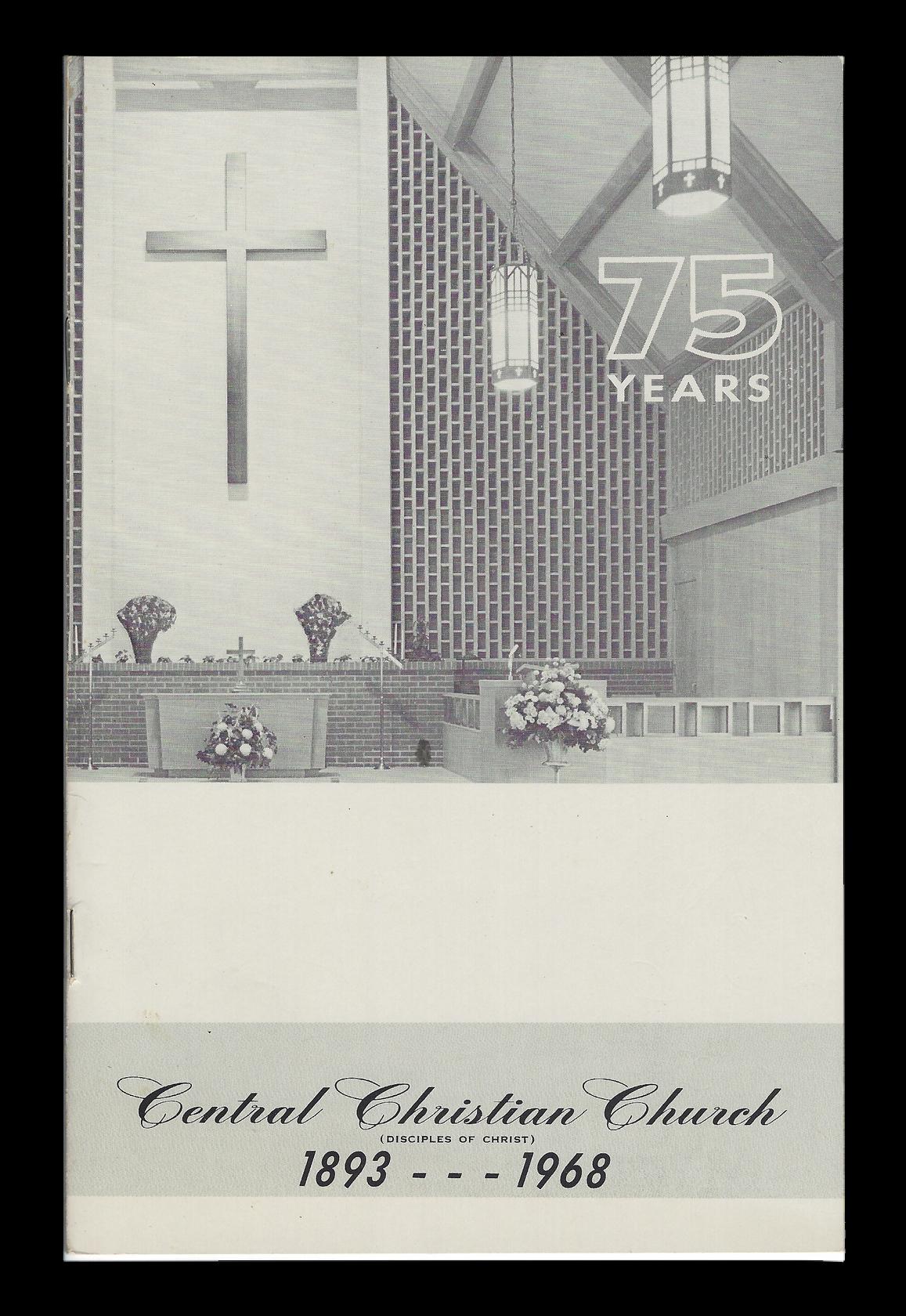
Left: Cover of 75th Anniversary Program, October 27, 1968
’ s optimism for the future, conflict lay ahead. In that same month, “Wesley Caddel has asked for a transfer of membership. He has been hired by the Nazarene Church to serve as an associate pastor to work with an interracial staff in a Nazarene church” (lviii) and Rev. Canady continued to bring up race relations and the divisions rampant in the country and in the community. In his Minister ’ s Report the next month, his frustrations with and hope for the congregation was evident. Here is his report in its entirety:
"I regret I am unable to meet with the Board this evening for I would like to share with you, in person, a matter of deep concern to me. The sermon last Sunday was an attempt to share a portion of this concern with the congregation.
Our divided world is THE major problem facing man today. The division is all but breaking down all lines of communication. Our non-commitment to the solving of this problem is no longer a live option. We have to respond with more than, ‘I understand the problem, but… ’
Neither can we any longer fool one another by what we say; we communicate only by what we do.
As a congregation, we have said we are open to receive, love and witness, regardless of race, with all who claim Christ as Lord. But, in fact, we have communicated that we are in the business of maintaining the status quo of a divided society. this since their inception.
They have always involved a member of a separated group in the planning and promoting of their programs in order to communicate to them… ‘We care about you.
I believe our message of caring and concern can only be heard if it is delivered in a similar way.
Therefore, I strongly feel that NOW is the time for us to integrate our church staff with a fully trained, seminary educated black director of Christian education can do two major things: (1) Help us grow in our Christian Faith through leadership training and study programs, and (2) Help us say to a very prejudiced world we are willing to be everything we have that Jesus Christ was right…all men can be brothers through love ” (lix).
If this is our business, then we need to clearly state it, and be about removing the name Christian Church from the cornerstone. If, on the other hand, we are in the Christian business of reconciliation, reconciling man with God and man with man, we must do in deed everything possible to say to an unbelieving world that men of faith can live, work and worship together no matter what there [sic] racial, economic, and political differences might be.
Realistically this can only be done through a member of the alienated group. This is not a new or strange idea. Political parties have been saying
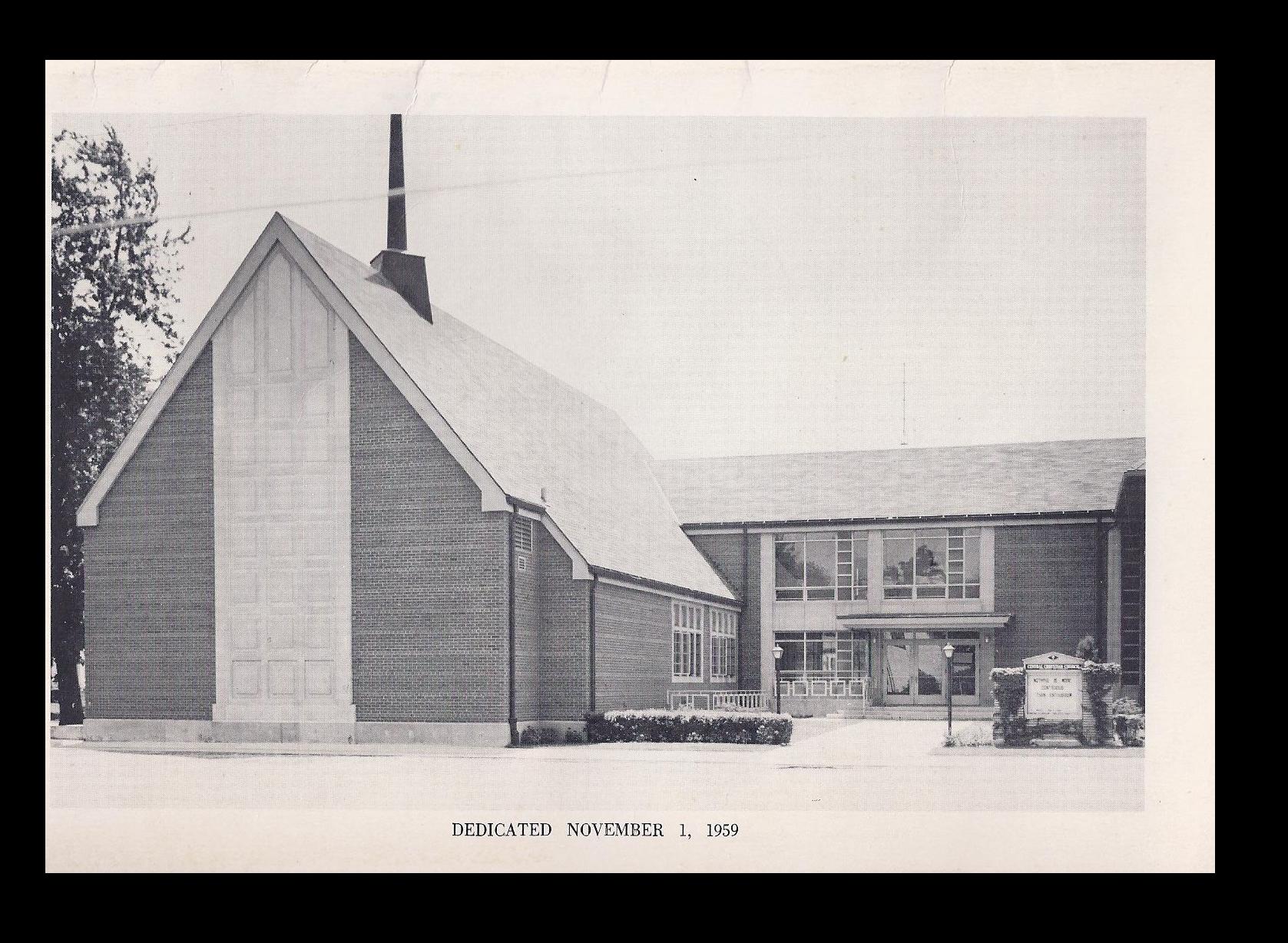
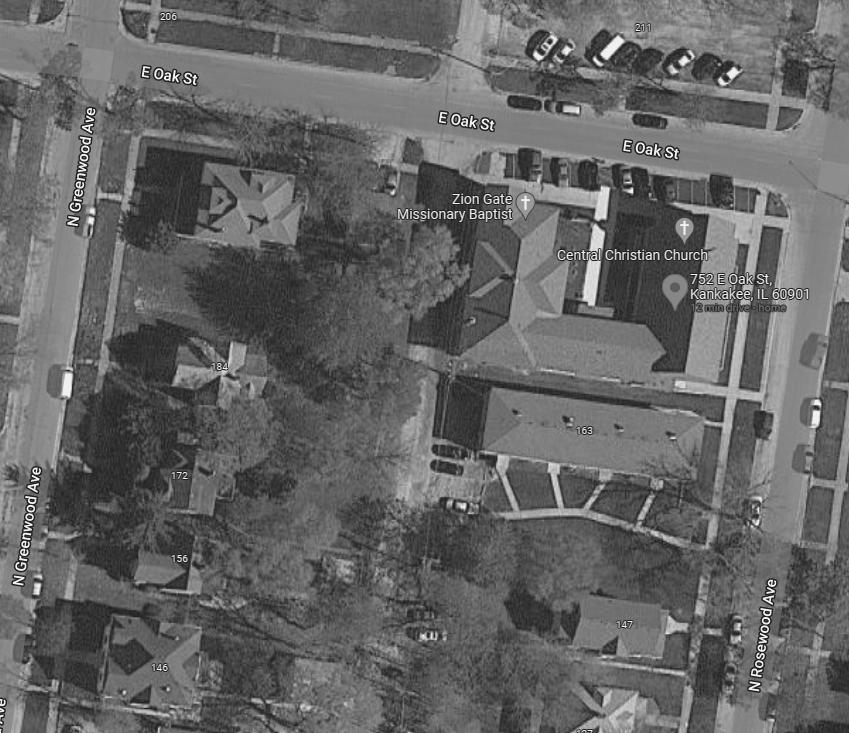
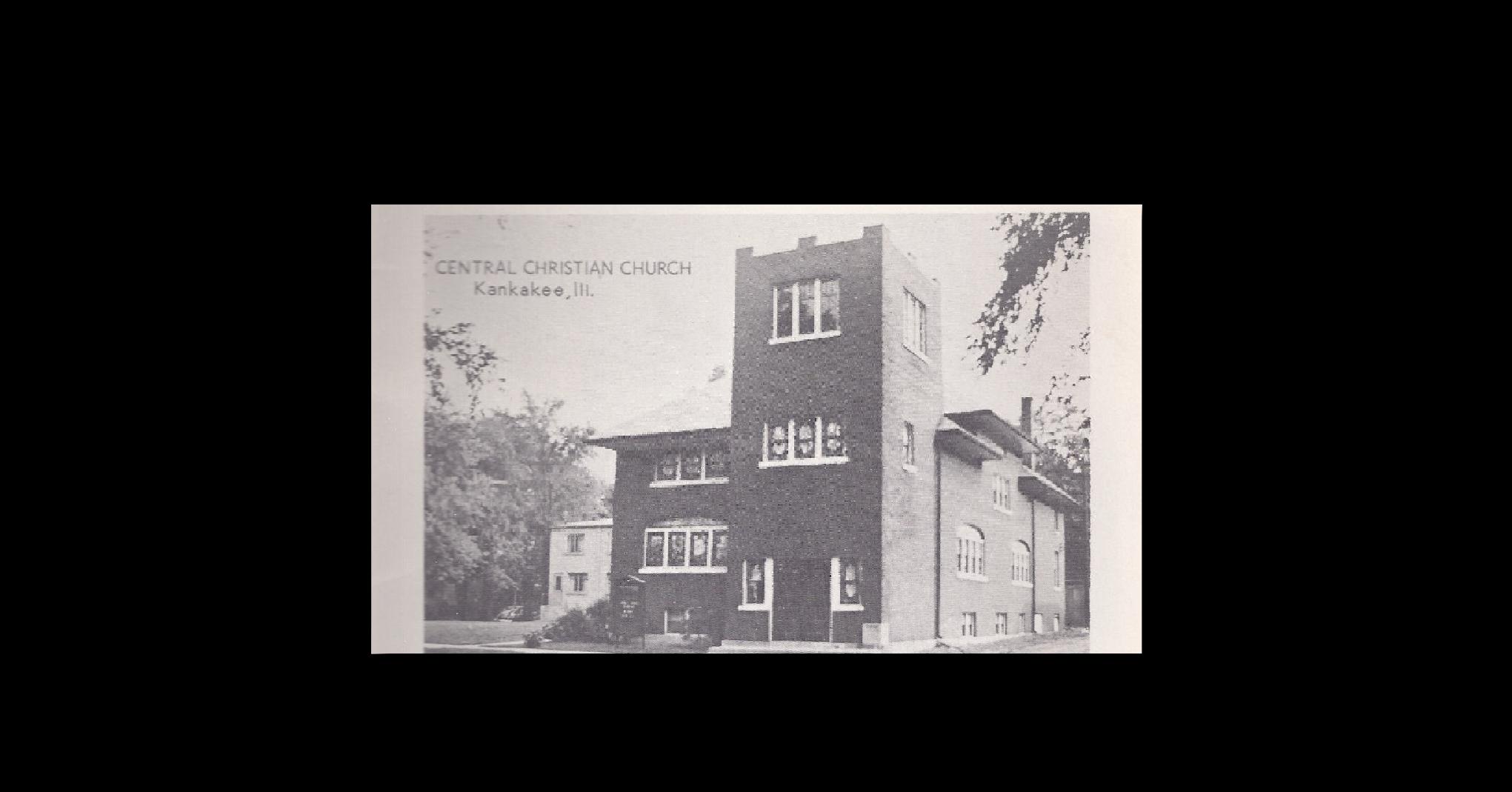
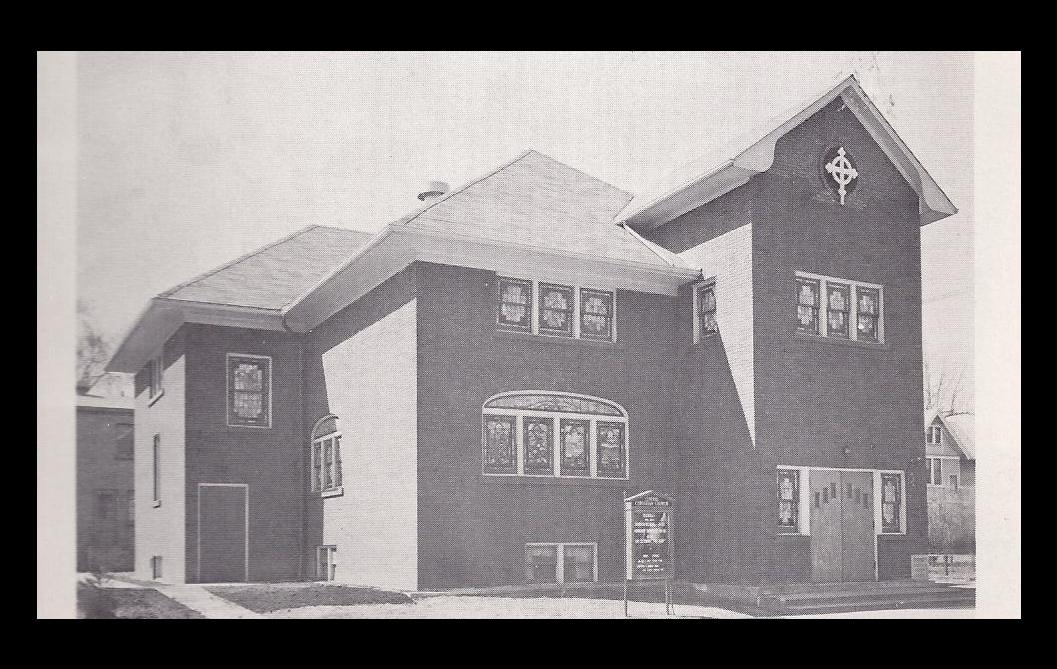
’ s suggestion would have been beneficial in creating a multi-ethnic church. After this report was read, the board voted by secret ballot as to what they would prefer in their next Religious Education Director: black or white, male or female. By the next month, the board had “ voted unanimously to ask the congregation to call Miss Mary Hulda Allen as minister of education ” (lx). After only a short time, her “ ministry has demonstrated her ability to give leadership and develop leadership in every area of the church’ s life. This will be accomplished here; however, only as the members of the congregation respond through participation in the programs which will be offered” (lxi). As the sixties passed into the seventies some of the lessons took root. Rev. Jack Canady and Board Chair Truman Lane had impressed upon the board and the congregation through their reports the importance of love for neighbor, and in July of 1973, church member and member of the Inter-Faith Sewing Group Molly Jaeger wrote a letter of appreciation for the support of Central and the space it gave them to work, letting them know she was “ proud to be a member of a church that interprets ‘love your neighbor ’ to mean those in need who live next door, as well as those in need around the world” (lxv) because often those in need next door are forgotten in the excitement of sending help elsewhere.
Despite the positive outlook, there was also some concern about the future of the congregation, with Chairman of the Board Leo E. Phillips encouraging Central to “ not succumb” to the statistics of churches that are declining “in membership, attendance, and in per capita giving ” which had become “ a national trend” (lxii).
Despite its love of neighbor, Central began considering its future, creating a Long Range Planning Committee in 1973 that would consider multiple options* , such as an ecumenical slant and go in with some other church or churches stay at this location and bridge relationships inside the church and also outside the church
This concern did not abate, as Rev. Canady made it the focus of his minister ’ s report the next month, explaining that the decrease in church importance and participation had been decreasing nationally and locally, and his understanding of the reason for it was “ a failure to comprehend [worship ’ s] real meaning and purpose ” and that it had been used as “ an escape from life ” instead of making “God very real to us ” (lxiii).
As the fiscal year of 1968-1969 came to a close, the church was $10,000 short of the asking budget (lxiv). establish a sister congregation purchase land for same move to other location, and sell the property" (lxvi).
Financial concerns were real, with discussion about what to do regarding the members who were behind in pledges because each week the church was falling a little more behind, despite the large attendance (lxvii)
A questionnaire sent to the congregation about the church as a whole came back with a good number of people who thought finding a new location would be a good idea (lxviii).









